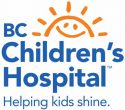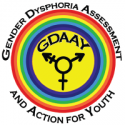Bauer GR, Pacaud D, Couch R, et al. Transgender Youth Referred to Clinics for Gender-Affirming Medical Care in Canada. Pediatrics. 2021;148(5):e2020047266
ABSTRACT:
BACKGROUND AND OBJECTIVES Referrals of transgender and gender-diverse (trans) youth to medical clinics for gender-affirming care have increased. We described characteristics of trans youth in Canada at first referral visit.
METHODS Baseline clinical and survey data (2017–2019) were collected for Trans Youth CAN!, a 10-clinic prospective cohort of n = 174 pubertal and postpubertal youth <16 years with gender dysphoria, referred for hormonal suppression or hormone therapy, and 160 linked parent-participants. Measures assessed health, demographics, and visit outcome.
RESULTS Of youth, 137 were transmasculine (assigned female) and 37 transfeminine (assigned male); 69.0% were aged 14 to 15, 18.8% Indigenous, 6.6% visible minorities, 25.7% from immigrant families, and 27.1% low income. Most (66.0%) were gender-aware before age 12. Only 58.1% of transfeminine youth lived in their gender full-time versus 90.1% of transmasculine (P < .001). Although transmasculine youth were more likely than transfeminine youth to report depressive symptoms (21.2% vs 10.8%; P = .03) and anxiety (66.1% vs 33.3%; P < .001), suicidality was similarly high overall (past-year ideation: 34.5%, attempts: 16.8%). All were in school; 62.0% reported strong parental gender support, with parents the most common support persons (91.9%). Two-thirds of families reported external gender-related stressors. Youth had met with a range of providers (68.5% with a family physician). At clinic visit, 62.4% were prescribed hormonal suppression or hormone therapy, most commonly depot leuprolide acetate.
CONCLUSIONS Trans youth in Canada attending clinics for hormonal suppression or gender-affirming hormones were generally healthy but with depression, anxiety, and support needs.





















